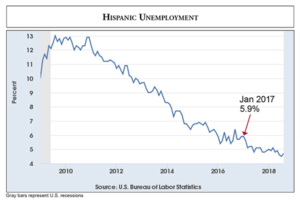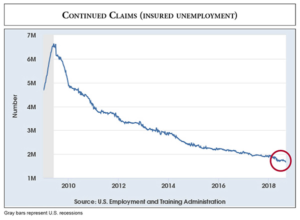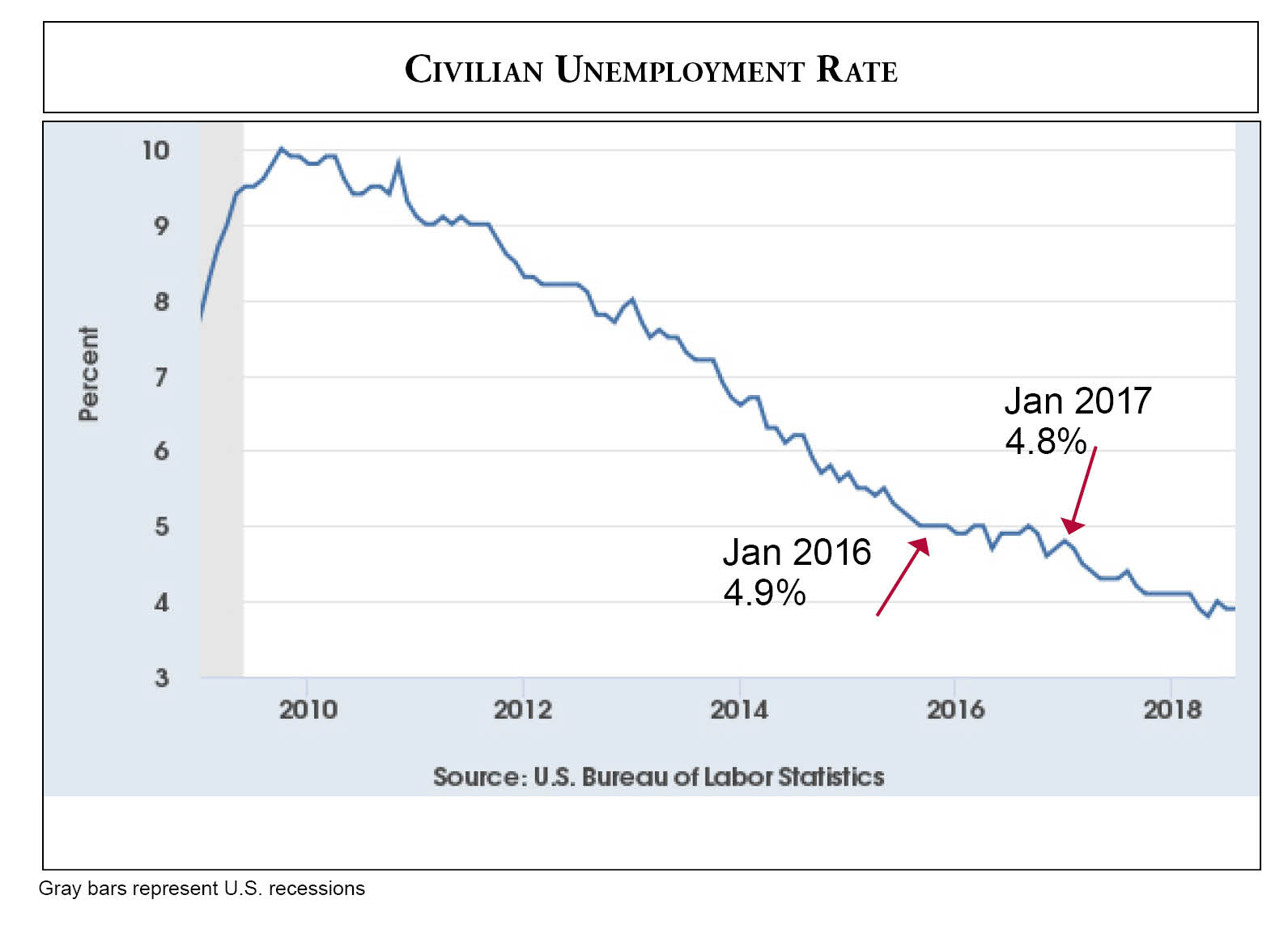By: Merrill Matthews – ipi.org – October 1, 2018
There’s an old saying that “a picture is worth a thousand words.” Well, economic graphs are “pictures” that tell a story—and sometimes tell it better than words.
In early 2016 the Institute for Policy Innovation identified 10 charts intended to tell the story of how President Barack Obama’s economic policies were impacting the country. While the economy had improved since he entered office, economic growth was well below historic norms—especially given the usually strong post-recession bounce-back that never emerged. During his last year in office, even those gains began to slow.
We are now approaching the two-year mark of the Trump administration, and the economic news is very positive. Oddly, critics are trying to credit Obama for the strong economic indicators, even as they complain that President Donald Trump is rolling back so many of Obama’s “achievements.”
We believe the data indicate that the strong economy is a direct result of President Trump’s and the Republican-led Congress’s efforts to reduce taxes and regulations.
To bring this information to the public, we are releasing an updated version, again with 10 graphs telling the story.
The graphs demonstrate the economy was improving under Obama, but slowly and often sporadically. And some indicators were plateauing. His defenders have argued that Obama’s slow-growth economy was the “new normal.” We countered that would only be true if high tax rates, hyper-regulation, and mandated wage and benefits increases were the new normal. Fortunately, they weren’t.
Beginning in 2017 many economic indicators began improving, leading to new highs in economic growth and new lows in areas such as black and Hispanic unemployment. Those improvements are a direct result of embracing a market-oriented agenda, including regulatory rollbacks, tax cuts and limited government.
Even so there are at least two warning flags. One is government debt, which has continued to grow at about the same pace as under Obama. The other is the growing trade war, whose outcome and impact at this point remain uncertain.
Private sector investment, not government spending, is the catalyst for economic growth and the best way to address poverty and income inequality. Trump knew and promised that upon taking office. For the time being, Obama’s slow-growth policies have been caged, and as a result the economy has been set free.
The U.S. unemployment rate has been trending down since October 2009, after peaking at 10 percent. But notice the downward trend began leveling off in January 2016 at 4.9 percent. In early 2017, it broke through the Obama economy’s unemployment floor. It is currently under 4 percent, a level that hasn’t occurred since the fall of 2000, and before that in the late 1970s. We think it is very likely that had Hillary Clinton been elected and continued Obama’s high-tax and regulatory policies, unemployment would never have fallen to 4.5 percent, much less crossed the 4 percent threshold.

Both black and Hispanic unemployment have reached historic lows recently. However, in this graph it is clear the Hispanic unemployment rate fluctuated at between 5 and 6 percent for the whole of 2016, never reaching the previous low set in 2006-7. But newfound business optimism beginning in 2017 helped push the unemployment rate much lower.
Unemployment Claims

The number of workers receiving unemployment benefits has declined steadily since May 2009, although the pace of that decline began to slow in 2014 and 2015. During Obama’s last year in office, the number of people receiving unemployment benefits dropped from about 2.23 million in January 2016 to 2.04 million in January 2017, a decline of nearly 200,000 people. During Trump’s first year in office those receiving unemployment benefits dropped to 1.94 million, a decline of only 100,000. However, since January, right after the Republican tax bill passed, through September, the number receiving unemployment benefits lowered to 1.64 million. That’s a decline of 300,000 in eight months, indicating a significant increase in employment opportunities.
Economic Indicators
One of the best aggregate indicators of the economy is the Conference Board’s Index of Leading Economic Indicators. The Index includes 10 components that provide a snapshot of the economy. It also serves as a good predictor of coming recessions. As can be seen in the Conference Board’s graph, since 1970 the LEI always turns down prior to a recession.
The Index flattened out twice during the Obama administration, with the last one coming toward the end. Since then it has continued a solid climb.
Manufacturing
[…]
Business Confidence
[…]
Consumer Confidence
[…]
Stock Markets
[…]
Federal Debt
[…]
Public Opinion
[…]
Conclusion
The lesson here is policies matter. Yes, the economy improved under President Obama, but was never going far or fast because he constantly applied the policy brakes.
Obama entered the White House in the middle of a deep recession. Instead of unleashing the economy by lowering taxes and reducing regulations, he and Democrats took the opposite approach. Plus, they poured taxpayer money into the economy, arguing that massive government spending would create jobs, contain the recession and lead to a burst of economic growth. When none of that happened, they blamed President George W. Bush, lowered their expectations—the slow-growth economy was the new normal—and took a victory lap.
We contended at the time that tepid economic growth occurred in spite of Obama’s policies, not because of them. And we argued that lowering taxes, reducing regulations and unshackling employers would lead to stronger economic growth. Democrats never embraced that approach; Trump did. The graphs included in this publication demonstrate who was right.
To see the remainder of this article and the accompanying graphs, click read more.
![]()
Source: A Snapshot of the Trump Economy
 Listen Online
Listen Online Watch Online
Watch Online Find a Station in Your Area
Find a Station in Your Area










 Listen Now
Listen Now Watch Online
Watch Online
